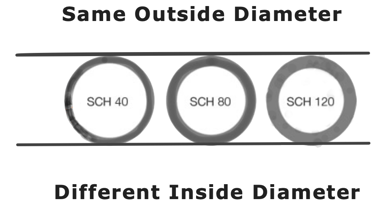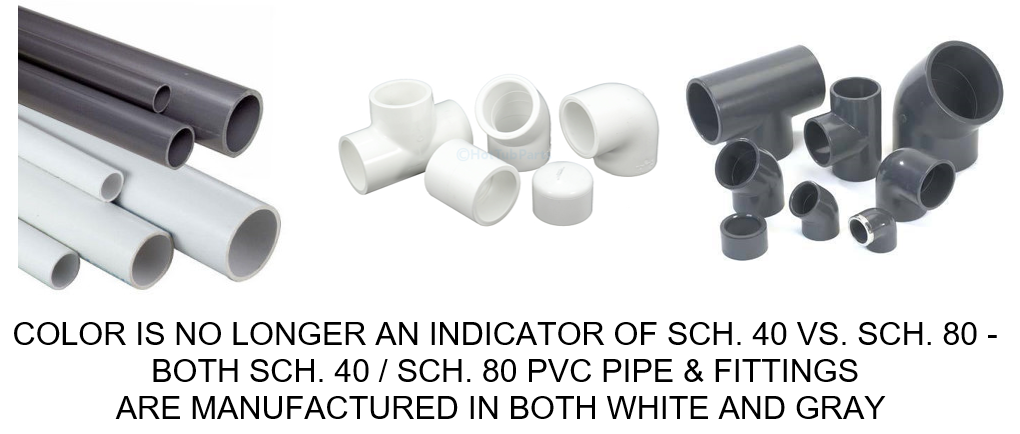Do the terms “Schedule 40” and “Schedule 80” apply to PVC ball valves?
They don’t! PVC valves do not have Sch.40 & Sch.80 ratings.

These terms refer to pipe and PVC fitting wall thicknesses only, not to valve wall thicknesses. The higher the Schedule number, the thicker the pipe wall. Equally important, the inside diameter gets smaller as wall thickness increases, while the outside diameter remains the same.

This is why a Schedule 80 valve can be installed onto a Schedule 40 piece of pipe, and vice-versa.
Since Schedule 40 and 80 are terms that describe pipe and fittings, why do some valve suppliers use them to describe their valves?
Unfortunately, some manufacturers and distributors describe PVC valves using these pipe-descriptive terms causing a great deal of confusion. It is important to remember that all valves are rated by pressure, not wall thickness (schedule). White PVC resin was typically used to make Schedule 40 PVC pipe and fittings and Gray PVC resin was normally used to make Schedule 80 PVC pipe and fittings. However today both Schedule 40 and 80 PVC pipe and fittings are manufactured in both colors of resin and color is no-longer an indication of the schedule of the fittings or pipe.

The terminology describing the pipe has been inaccurately carried over to describe PVC valves which can be molded from either white or gray resin. These valves are rated by pressure only and can be in either piping system.
Additional Resources
https://support.boshart.com/are-the-28-pfv-xx-series-pvc-float-valves-sch.-40-or-sch.-80
